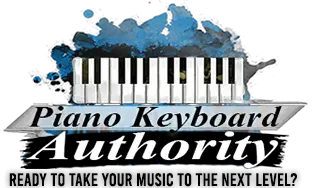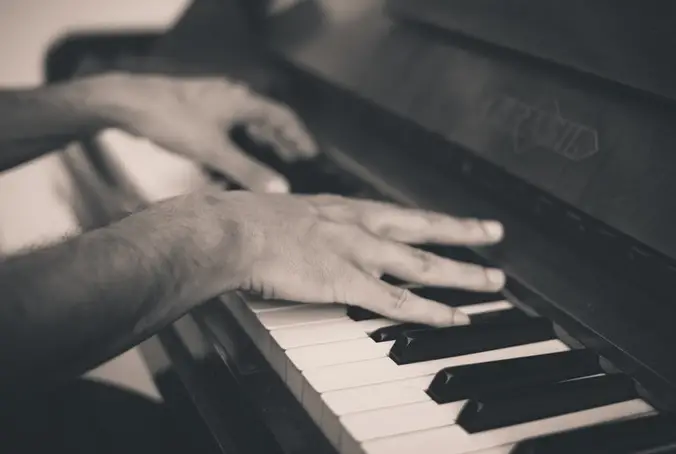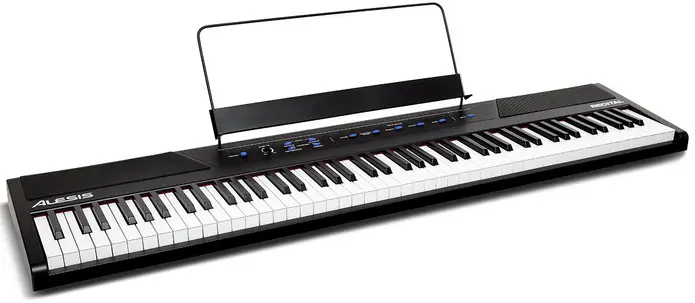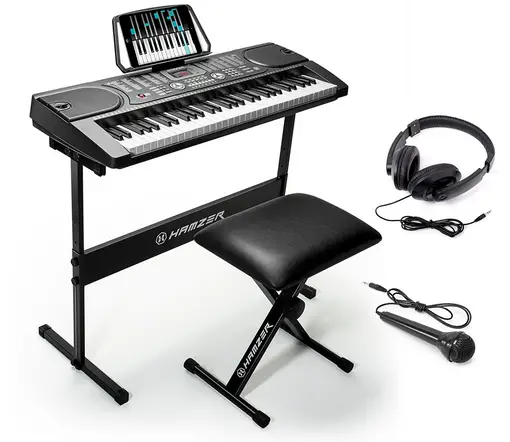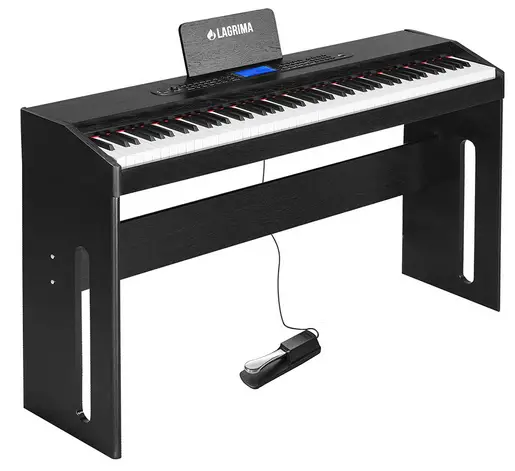Table of Contents
Introduction
Are you a musician who is looking for the best digital piano under 300? You’ve come to the right article – we are going to cover some of the most budget-friendly but still packs a lot of great features, durability and quality sound.
Most of the time, not all those who want to learn how to play the piano have the right budget, especially if you are just starting out as an artist or piano player. Therefore, it is important to consider the price when you are choosing your ideal digital piano.
Our Top Picks
Here are some of our ideal choices for a digital piano under $300:
The Best Digital Piano Under 300: Alesis Recital Digital Piano/Keyboard
The Alesis Recital is our best choice for something under $300 and can make music out of digital piano keys. Here are some of its features, benefits, as well as pros and cons:
Features
- Keys – this one has 88 keys in total, so it can be slightly larger than your usual 61-key or 76-key keyboard.
- Speakers – it comes with 20w speakers that help you monitor your performance.
- Polyphony – it has a max polyphony of 128 for playing multiple notes simultaneously
- Voices – it has various voices, such as acoustic piano, electric piano, organ, bass, and
Benefits
- Full-size keys – this helps you to easily adjust from the digital piano to the real grand piano.
- Responsive keys – all of them have semi-weighted keys for a realistic performance.
- Split mode – you can use this to play two different voices at the same time.
Pros
- Wider octaves – you can play with more octaves than your usual portable piano.
- Responsive touch – the weighted keys can give you an edge in creating a more realistic performance in any occasion.
- MIDI-compatible – you can use the port to connect the piano keyboard to your computer for sequencing MIDI to your DAW or digital audio workstation.
Cons
- Few presets – it only has 5 voices available as compared to our previous pick from Yamaha above.
- Speakers – unlike higher priced digital pianos, the speakers don’t have that much quality but are bearable for simple practice.
Ideal for Beginners: Hamzer 61-Key
If you are a beginner at playing the keyboard, a good choice would be the slightly cheaper piano, the Hamzer 61-Key. You’ll find more information about it below:
Features
- LCD Screen – you can see the information on the screen regarding the notes and voices.
- Voices – you get a total of 255 voices and 255 rhythms in total.
- Demo Songs – there are also 24 demo songs for you to learn.
- Headphone Jack – use this for practicing your songs without disturbing the neighbors.
Benefits
- Auto Chord – you can use this for being a one-man band.
- Complete Package – it is a beginner’s set that anyone can start with, which includes a microphone, headphones, stand and stool.
- Can be portable – choose between 6 AA batteries or the 110-120v power adapter for using this keyboard.
Pros
- Tons of presets and voices – this would be helpful if you are starting a one-man band or performance. You can use this for different occasions and even during recording sessions.
- Beginner-friendly – the price and the complete packaging is good for beginners who are just learning to play the piano or keyboard.
- Quiet practice – use the headphone jack to practice even when everyone’s asleep so you can hear which notes are off-tune.
Cons
- Keys are not weighted – this may not be a good thing for professional players.
- Sound quality – many note that the sound quality may not be that good for intermediate players.
Comes with a Piano Stand: LAGRIMA Digital Piano
If you want something that already has a piano stand, the Lagrima Digital Piano may be for you. Here are some of its best points and things to consider:
Features
- Keys – it has a total of 88 keys for a piano keyboard.
- Stand – it comes with a stand so you don’t have to go and buy one separately (you can choose between white and black colors for the finish).
- Pedal Board – you also get a pedal board included with the piano keyboard.
- LCD Screen – shows you a lot of information about your currently playing song or settings.
- Presets – it has over 480 voices, 200 rhythms, and 80 demo songs.
- Slide cover design – looks stylish and can protect your keys from the elements.
Benefits
- MIDI connectivity – you can use its USB/MIDI terminal to connect to your DAW or digital audio workstation.
- Record and Play – you can listen to your piece to make note of any mistakes, which can be useful for practicing or studio work.
- Weighted Keys – this adds more dynamics to your performance.
Pros
- Dynamics – combine the weighted keys and the pedal, you get a set of dynamic tools to make your performance sound like one that’s played from a concert grand!
- Lots of Presets – with a lot of tones and rhythms to back you up, you can easily perform songs with any instrument.
- MIDI compatibility – you can use the MIDI function if you want to sequence notes to the computer and record your performance.
Cons
- Assembly – since it comes with the stand, it can be a bit hard to move around or assemble with just one person – it may take two people to put it together.
Conclusion
Saving up is not a bad thing if you really want to have a decent digital piano that’s easy on the budget and still great in many aspects of being a musical keyboard. We hope you enjoyed our digital piano reviews, the Hamzer 61-key, Alesis Recital and the LAGRIMA Digital Piano. If you are interested in any of these digital pianos under $300, check out their full prices on Amazon right now!
